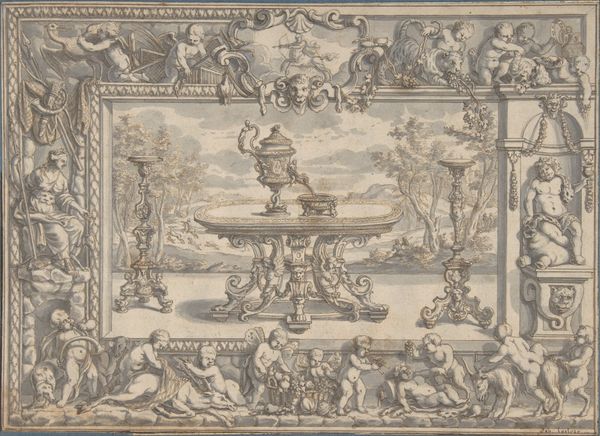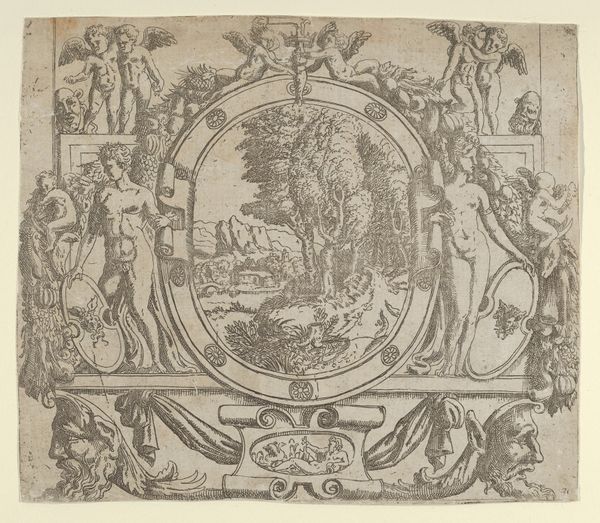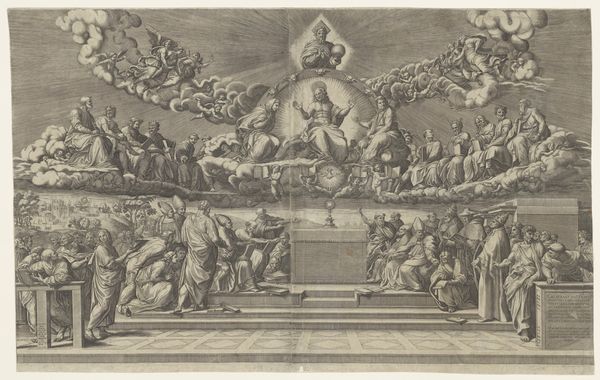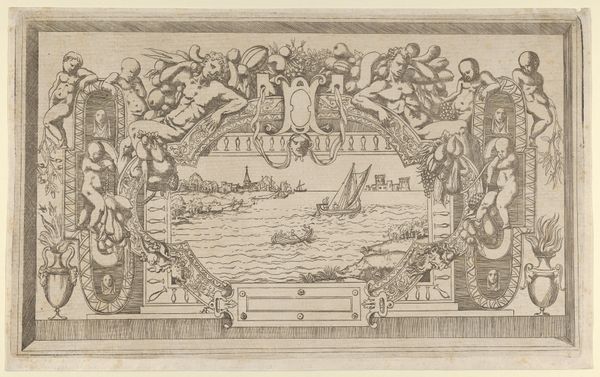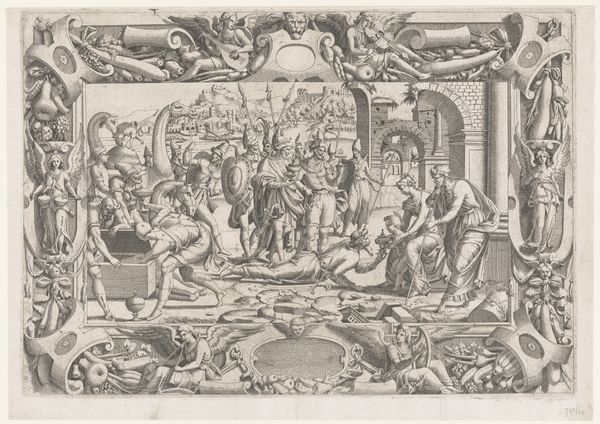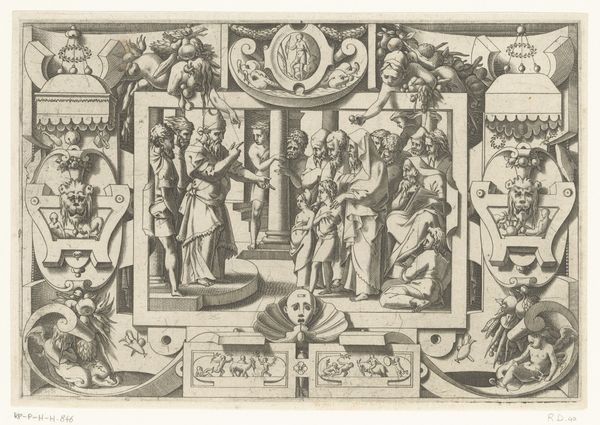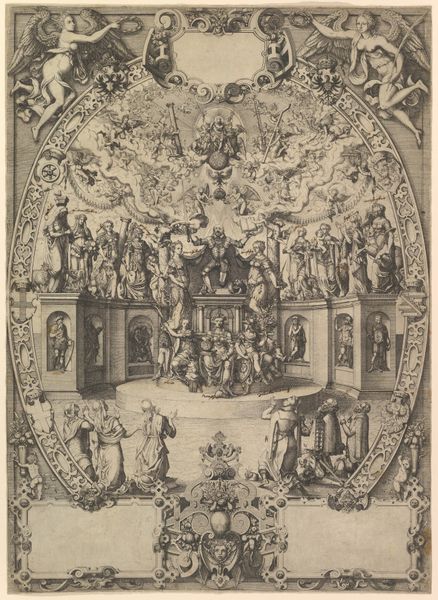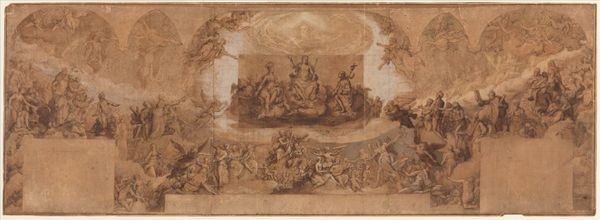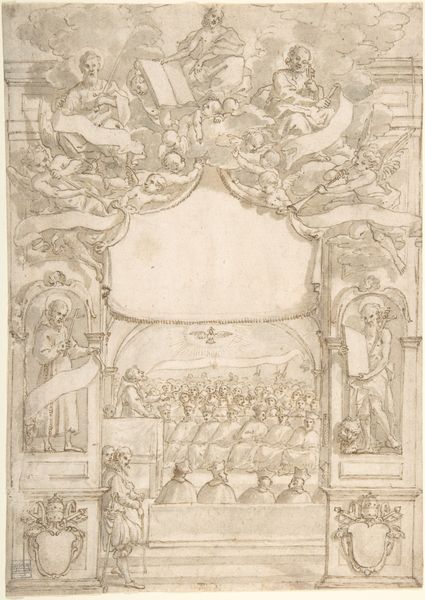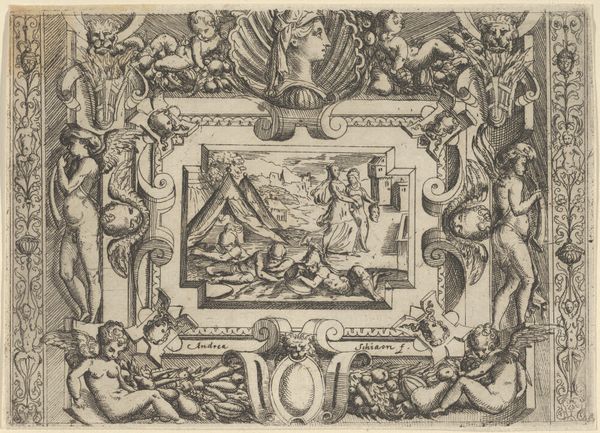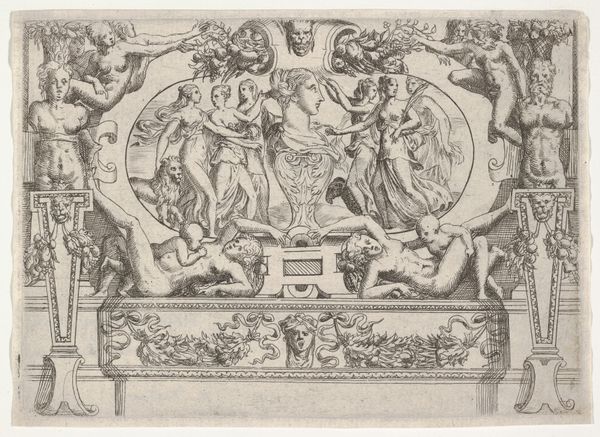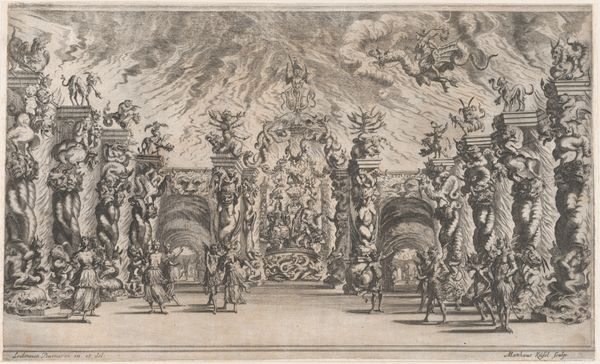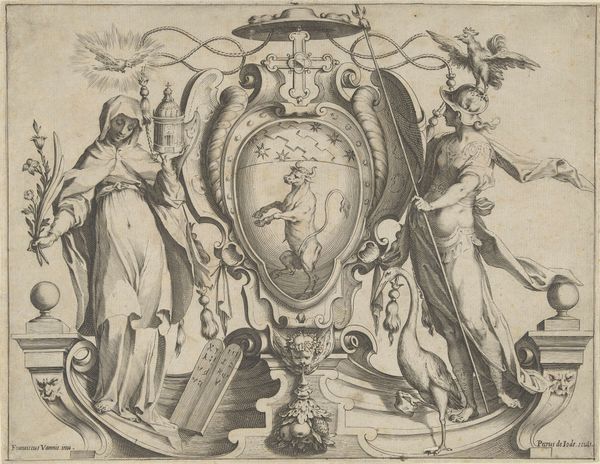
drawing, print, ink, pen
#
portrait
#
drawing
#
narrative-art
#
pen drawing
#
dutch-golden-age
# print
#
figuration
#
11_renaissance
#
ink
#
pen
#
genre-painting
#
history-painting
Dimensions: height 353 mm, width 500 mm
Copyright: Rijks Museum: Open Domain
Curator: Right now, we’re looking at "Trap des Ouderdoms met boeren en boerinnen," which roughly translates to "The Stairway of Old Age with Peasants," a drawing done in pen and ink. It's from the Dutch Golden Age, attributed to Pieter Nolpe and dating approximately from 1623 to 1652. It’s part of the Rijksmuseum's collection. Editor: Oh, what a melancholic vision. The composition alone makes you feel like you're spiraling downward—all those tiny figures marching towards oblivion. Dark. Curator: Indeed. Nolpe presents us with a stepped allegory. If you look closely, you'll see humanity depicted at different stages of life, climbing upwards in small groups until they reach a summit... only to descend into infirmity and, ultimately, death, represented rather starkly at the base. Editor: It’s fascinating how the drawing style amplifies the grim message. The dense, cross-hatched lines give everything a somber, almost oppressive weight. It’s all made with pen and ink—imagine the labor in rendering such details. The paper must've been chosen meticulously too. And all of these repeated figures, likely reproduced. Curator: Exactly! The medium underscores the universal experience he’s portraying, I think. Think about how each step represents a phase. The figures at the top seem oblivious to the end that awaits them, engrossed in their present joys and triumphs. Nolpe's making us think about mortality and our place in the great unfolding. The everyday elevated to something almost philosophical. Editor: What’s interesting to me is the production value alongside the depiction of peasantry and working life. It seems contradictory— a print, even, created for perhaps wealthier consumers as a form of moral reflection on those whose labor they extracted value from. There’s some clear class commentary happening here. Curator: That’s a sharp point. It does open up questions about the intended audience and the purpose. Is it simply a memento mori, or does it carry a critique of social hierarchies as well? Are we meant to pity or judge these figures on their journey? The piece definitely refuses simple answers. Editor: I'd argue it's the materiality that holds the answers to the meaning! Considering it’s intended for reproduction shifts it. Knowing the socioeconomic position of Nolpe adds layers. We cannot disconnect it from its time and how the average person came across it. Curator: Hmm, it brings a rather bleak yet oddly comforting outlook, doesn't it? As the piece seems to tell me "don’t take life too seriously", for nothing will last anyway! Editor: Right—makes me really wanna dive into the historical paper trade! I am convinced this print carries much richer layers of contextual meaning if explored with its economic circumstances in mind!
Comments
No comments
Be the first to comment and join the conversation on the ultimate creative platform.

